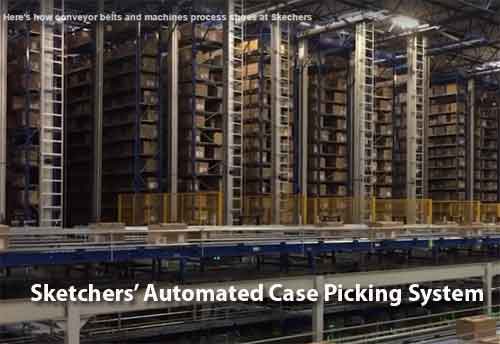All told, warehouse and distribution employment remains a bright spot on the US jobs front.
For example, warehousing operators added 3,100 jobs from October to November, and have boosted payrolls by 47,400 jobs over the past 12 months, according to statistics from the US Dept. of Labor. All told there are about 880,000 warehouse workers in the US, with 103,00 of them in California.
Supply Chain Digest Says... |
|
|
But those numbers, which have shown similar patters now for several years, bely the growing use of automation that is clearly reducing in many cases the number of workers needed to run a major distribution center, as robots and other forms of automation take a growing share of repetitive manual labor, just as they are doing in manufacturing.
Amazon is a good case in point. Since 2014, the company has added 50,000 workers in its fulfillment nationwide - but has also deployed more than 30,000 of its Kiva System robots, after Amazon acquired Kiva in 2012.
Those orange robots - really a form of automated guided vehicle (AGV) - carry shelves of merchandise that are delivered to workers in pick stations, where light systems direct the workers as to what goods from the robot shelves should go in what outbound cartons. The result: workers no longer do the tough job of walking miles and miles up and down distribution center aisles to pick orders. The robots do the walking, and the humans the job of actually selecting individual items, for which hand dexterity is required. In the end, productivity goes up, and fewer workers are needed per case out the door
As recently reported by the Los Angeles Times, shoe maker Sketchers provides an interesting example of these trends. In 2010, the company operated five different DCs in the Southern California area that employed about 1200 workers. Now, after consolidation of those facilities into a single DC in Riverside that uses a high level of case picking automation, the building operates with just 550 workers six years later, despite growth in volumes.
The automation starts on the inbound side, where a sortation system helps mechanize pallet building from floor loaded containers coming in from Asia. It used to take Sketchers 10 workers and several hours to complete the process per container when they were unloaded manually. Now, the process requires just three people and takes less than an hour.
"You have to become more efficient. It's the only way to upgrade. You can't always be looking for cheap labor," said David Weinberg, chief financial officer of Manhattan Beach-based Skechers, told the LA Times.
"There is some manual labor [at the facility], but there are certainly more skilled jobs, managing power equipment, handling traffic and on computers," Weinberg added.
Now, Far fewer Sketcher DC employees handle twice as many pairs of shoes as they once did, and salaries have gone up on average - mainly because there are fewer people earning the minimum wage.
The Times article offered the examples Lourdes Gonzalez, who started with the company in 1992 as a packer in an old Skechers facility in Compton. Then, she earned minimum wage and walked through 50-plus aisles of shoes to fill orders based on paper pick lists.
(See More Below)
|
CATEGORY SPONSOR: SOFTEON |
|
|
| |
|
|
"Now, everything we do is through the system," Gonzalez says, seated in front of several monitors packed into a small room above the floor of the warehouse.
She spends her entire day overseeing the flow of orders through the building. One minute she is staring at a live map showing traffic flow and any jams on the conveyor belts, and the next she is studying a spreadsheet that shows how far along workers are in processing orders on deck.
Gonzalez now earns more than $20 an hour for this work, and covers her three children on her company-provided health insurance.
"I love my job," Gonzalez told the Times, adding that "It's fascinating."

While Amazon still has tens of thousands of DC workers doing very manual and repetitive labor, depending on the specifics of each facility, its hiring profile is also starting to change.
Amazon has begun making room for more highly trained and well-paid technicians to ensure that the machines are charged up and connected to the network that controls them, and to fix any mechanical bugs.
"We are able to create more technician-type roles in the [robotic] fulfillment centers that pay differently than an hourly associate," says Ashley Robinson, a spokeswoman for Amazon, told the LA Times. "There is a level of technology and algorithms that people in those facilities would be working with."
The growing challenge of finding and retaining DC workers will surely push further DC automation.
For example, at the MHI conference in Tucson, AZ in October, an audience member at a panel discussion on workforce issues moderated by SCDigest editor Dan Gilmore commented that he is seeing turnover rates in DC associates of 35-60%, depending on the geography, and that it takes 6-8 temporary workers to find one permanent one, quantifying the scope of the challenge as many in the room nodded their heads in agreement.
Gilmore then commented that during another panel discussion at the CSCMP conference in Orlando in September, Steve DeNunzio of Ohio State University said he was seeing adds for DC job in the Columbus area (where there is low unemployment) offering wages now of more than $18.00 per hour already. (See Detailed Recap of Outstanding MHI Conference Panel - Focus on Workforce.)
S0 while distribution seems likely to see positive job growth for some time, driven by ecommerce fulfillment, that pace is likely to slow, as the robots become commonplace in DCs.
Do you see warehouse jobs declining any time soon due to automation? Will troubles fnding and retaining workers basically force companies to more automation? Let us know your thoughts at the Feedback section below or the link above to send an email.
Your Comments/Feedback
|